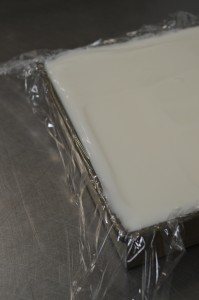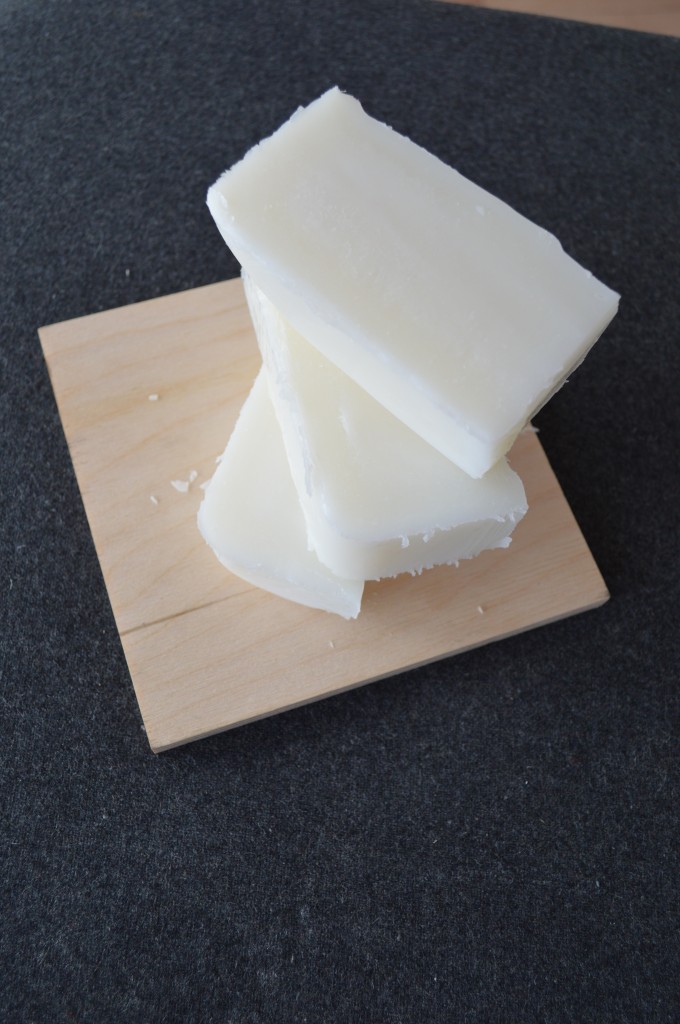 If you had told me five years ago that one day I would make soap I would have scoffed with self-righteous indignation. Being a very serious chef and a bit of a dink I eschewed the “arts and crafts” that took precious space away from food at the farmers’ market. I don’t feel that way anymore: I appreciate the pottery and the quilts and the pysanka, and even the beeswax candles.
If you had told me five years ago that one day I would make soap I would have scoffed with self-righteous indignation. Being a very serious chef and a bit of a dink I eschewed the “arts and crafts” that took precious space away from food at the farmers’ market. I don’t feel that way anymore: I appreciate the pottery and the quilts and the pysanka, and even the beeswax candles.
For the past few years I have been rendering lard from sides of pork. Now, I think I eat more lard than most: I use it in pie dough, I make spreads like Grammelschmalz and Schmalzfleisch, and use it as an everyday cooking fat. Even so, I can’t eat it as fast as the anatomy of my pigs demands that I produce it. When I cut this year’s pig there was still about ten pounds in my freezer. I decided to use it up by making an inedible pork product: soap.
Traditional soap is a mixture of fat, water, and lye. Lye is sodium hydroxide, a very strong base, once commonly used in homes as a cleaner, valued for its ability to break grease into water-soluble debris that can be rinsed away. It is also used in the traditional production of bagels and pretzels, which are briefly boiled in a lye solution before being baked in an oven. (Milder baking soda often subs in these days.) I have no idea where to purchase lye; there just happened to be some in the kitchen at Elm Catering, remnants of a pretzel-bite experiment.
Anyways, when water, lye, and fat are mixed properly a process called saponification begins. I tried to read the Wikipedia article on saponification, but understand almost none of it. All we need to know is that saponification converts these three seemingly incompatible ingredients into bars of hard soap. For specific recipes and procedural details I used this website, recommended by Michael Ruhlman.
The process in a nutshell:
Dissolve the lye powder in cold water. A chemical reaction occurs and the water actually becomes quite hot. My cold tap water was at almost 80°C by the time all the lye was dissolved. Best not lean over the bowl as you dissolve the lye: sniffing the fumes is a bit like inhaling bleach. The lye solution must cool to below 37°C before it can be mixed with the lard.
Melt the lard. While the lye solution cools you can slowly heat the lard. Optimal temperature is 85°C-115°C.
Mixing. Pour the lard into the lye solution while stirring. The mixture must then be stirred vigorously until it thickens, like a custard. This is called “trace” stage. I used a stick blender and had a pudding consistency in about three minutes.
Pour into molds. I used a steel baking tray lined with plastic wrap.
Shape. After 1-3 days you can cut the soap, still in its mold, into bars. After 3-7 days you can remove these bars from the mold.
Cure. At this point the soap is still too basic to be used on your hands. It must cure for another two weeks or so, during which time the saponification process continues, the pH drops significantly, and the soap hardens and becomes more opaque.
So, what’s the soap like? It’s fine. It’s soap. The first thing most people ask is if it smells like pork because it’s made from lard. The answer is no: if you render the lard properly it should be very neutral.
The soap lathers, through maybe not as much as a bar of Irish Spring.
For me the real value of making soap is that it uses up the last bits of fat from the animal that I have been unable to consume at the table. The process is dead simple, and quick. I don’t know if I’ll be making soap every year, but it’s a useful trick to have when the freezer runneth over with lard.
